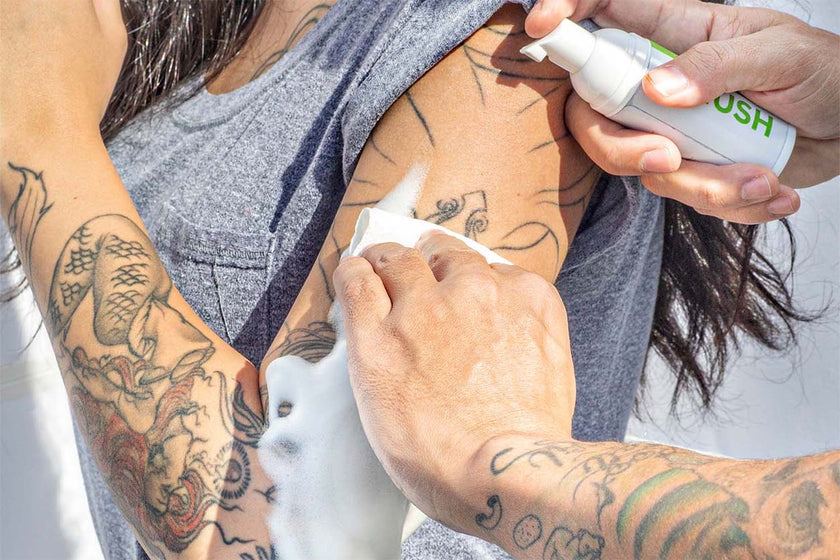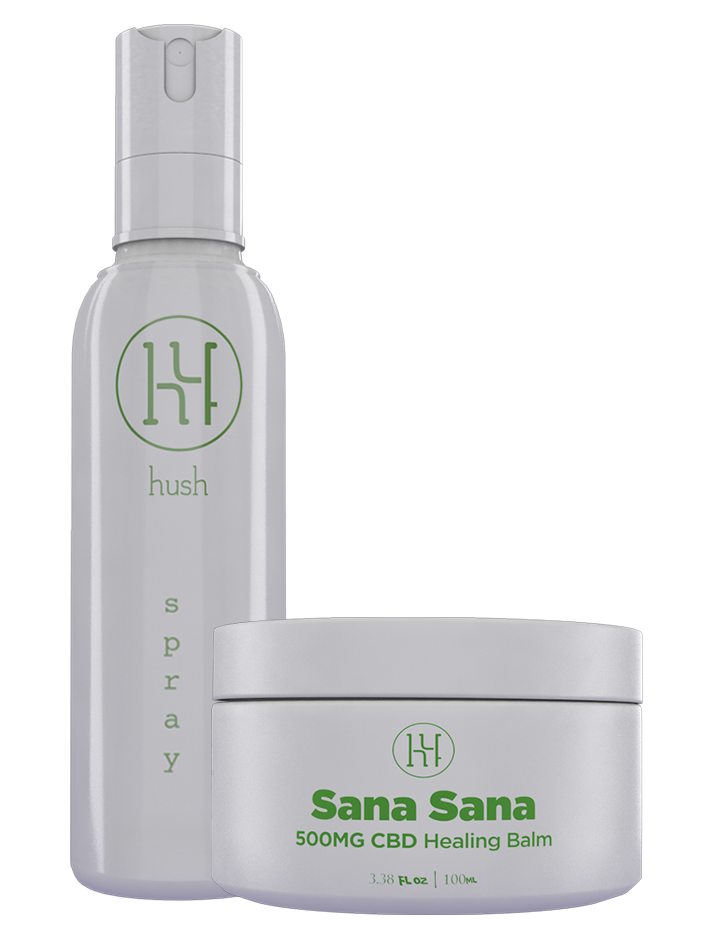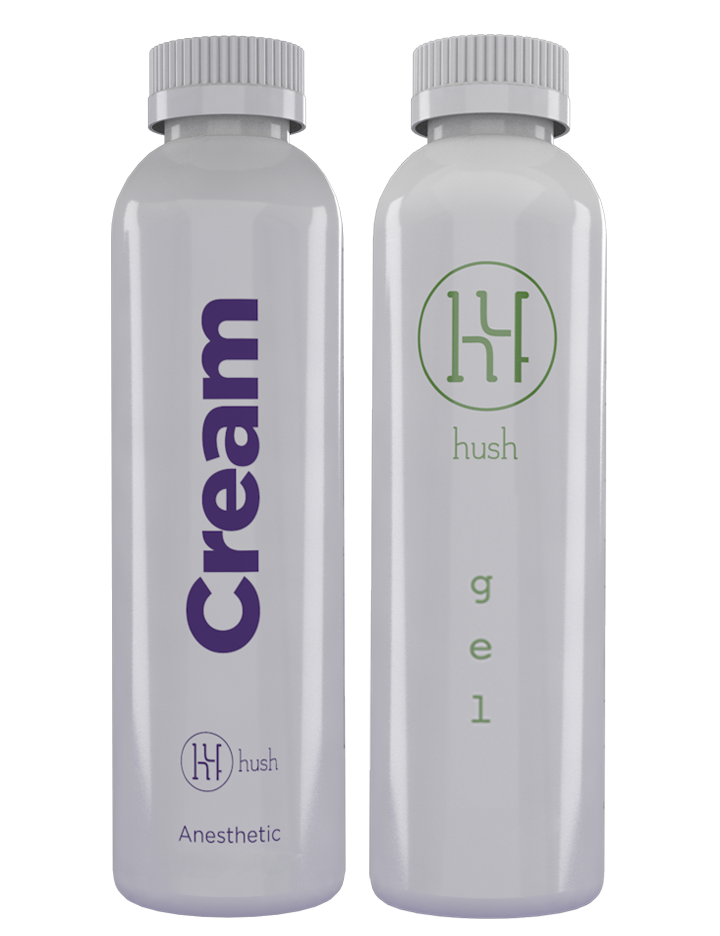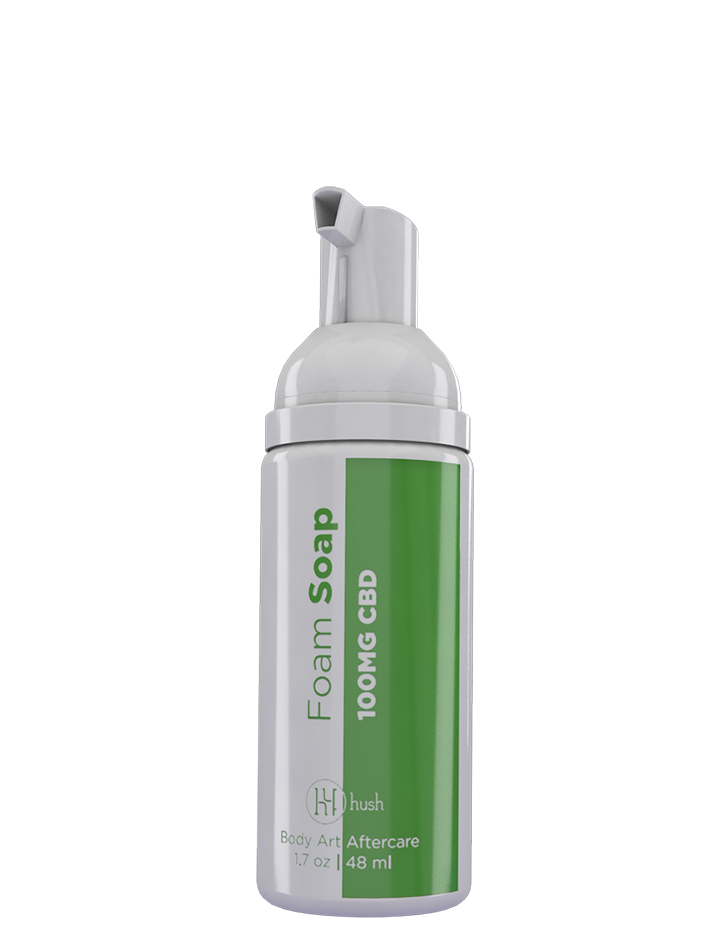Pain and tattoos are a package deal. Besides tattooing being “taboo” and “making you look unprofessional” 🙄, pain is the second most common association with tattoos.
“Didn’t that hurt?!”
People love to talk about pain and tattoos, and for good reason. Yeah, they can hurt, and hurt a lot! There are a lot of factors that will determine how much a tattoo will hurt — the first being your pain sensitivity. Other factors also come into play, like shading, color, and line work.
Today we explore why color tattoos could be more painful (and cover how you can help that color tattoo hurt a little less).
Why Do Tattoos Hurt?

It’s all about how tattoos work. A needle is flooded with tattoo ink and then inserted (aka stabbed) into your skin, depositing the ink into the dermis. The dermis layer is one below the epidermis. The process of tattooing leaves a bunch of tiny little stab wounds.
Depending on where it is, one single prick of a tattoo needle will feel like a sting. Not quite as powerful as a bee sting, but more similar to a shot at the doctor's office.
Okay, that’s one single prick of the needle. How does it feel to get an entire tattoo?
Well, the first pass of the tattoo (the outlining and first layer of ink) will feel like a bunch of tiny stings, but usually, it isn’t too bad. Again, this all depends on placement and your pain tolerance.
Tattoos generally become painful after that first pass because of your activated immune system. All that stabbing tells your brain that your body is under attack and your immune system needs to activate its healing sequences.
Your skin will inflame after that first pass, and blood will rush to the wound site to fill it with healing agents and nutrients. You’ll usually also get an adrenaline kick, which should help with the pain a bit.
The second pass is usually more painful than the first because the artist is going over an already stabbed, wounded, and tattooed area. Depending on your adrenaline level, this pass and the following passes will probably feel more jarring.
The pain you get from touching a hot surface or being pricked by a tattoo needle is “good” pain. It alerts your body that something is harming you, and you need to react. If you didn’t feel any pain from getting a tattoo, you have a reason for concern.
Pain is personal. Everyone feels some level of pain, but how they perceive it and how intense it is will differ from person to person.
One person might get a tattoo on their shoulder and fall asleep during the tattoo session. Another person might need to use some HUSH numbing gel to be able to sit through a forearm session.
You know your body and pain threshold better than anyone else, so prepare for your tattoo session accordingly.
How the Type of Tattoo Needle Affects Pain

Different tattoo needles feel different. When you hear the word needle, you may associate it with that single medium-sized needle you have in a sewing kit, but tattoo needles are very different. Peruse through any tattoo supply store, and you’ll see exactly what we mean.
Tattoo needles are specially made to deposit tattoo ink. There are different sizes of needles and different arrangement styles of tattoo needles. There’s a whole industry there.
You can get deep into the different styles and quality of tattoo needles available, but for brevity, needles come in different sizes and arrangements or “groupings.”
- Typical needle sizes range from 0.25mm (eight gauge) to 0.40mm (14 gauge). As you can imagine, smaller needles are better for intricate and fine-line work. Larger needles are better for bold lines and shading larger areas.
- Groupings are a collection of needles shaped in a certain way. There are about six different types of groupings. Some are better for fine-line and detailed work, and others for bold work, color packing, and shading.
Different amounts of needles are used in groupings. It all depends on preference and the look the tattoo artist is going for.
- Shading: Creating depth perception by adding a certain amount of a darker ink.
- Color Packing: Adding a bunch of tattoo ink in one spot of a tattoo to make sure the color pops.
- Passes: Refers to tattooing a specific area. The second pass would be the second time the artist tattoos the area.
To put it into practice: You can buy an eight gauge 03 Round Line — it is a grouping of three, eight-gauge needles in the round liner style. This needle style isn’t going to hurt as much as a more aggressive grouping style, with 15 thicker needles grouped.
But the round liner styles don’t deliver as much ink, so they aren’t good for shading. You would need more passes, and more passes mean more pain.
A wider grouping with more needles is better for shading or color packing because it deposits more ink on the first pass and requires fewer passes overall.
Tattoo artists will probably use thicker needles or wider grouping styles and more needles in the grouping for lighter colors that require more ink depositing or areas that need more ink. They will probably use thinner needles or thinner grouping styles and fewer needles for darker inks and areas that require fine lines.
This is why some people may have a preconceived notion that the color of the ink dictates pain levels.
Color Ink vs. Black Ink: Pain Differences
Tattoo ink, no matter the color, feels the same going into the skin. If you use one style of needle and try every color, you won’t feel a difference.
How much ink needs to be deposited for certain colors makes the difference.
Darker ink doesn’t need as much color packing. Colored ink — especially lighter colors — needs to be condensed more in the skin, meaning thicker needles or more passes of the tattoo needles going over the same spot.
We feel like the question, “Do color tattoos hurt more than black or grey tattoos?” makes you think there’s a big difference between colored ink and black or grey ink. There are differences between all tattoo inks but nothing that affects the pain level of getting a tattoo.
The probability of a color tattoo hurting more is because the tattoo artist needs to pass over the same area multiple times to get proper pigmentation of color in the skin.
How Skin Color Can Affect Tattoo Pain

The color of your skin can also help predict pain levels during the tattoo session. The darker your skin is, the more passes of tattoo ink you will generally need.
Black, blue, and green tattoo inks show up fairly well on every skin color, while white and yellow ink starts to disappear in darker skin tones because there are more melanin deposits those colors are trying to stand out against.
But that doesn’t mean those colors won’t work at all. If you have a darker skin tone and you want a tattoo with white or yellow ink, chat with your artist about the type of inks they use and how they will work on your skin tone.
That said, darker skin typically requires more ink, but that doesn’t mean the skin needs to be overworked with ink. That can cause scarring damage.
Make sure you are working with an artist trained to tattoo your skin tone. You don’t want to be subject to some artist drilling you with a bunch of ink that will never show up with your skin tone. That’s a lot of pain and no gain.
In Summary
Color ink is not inherently more painful than black or grey ink.
Getting a tattoo with color canbe more painful than a black or grey tattoo because some colors require more ink, which means thicker tattoo groupings and more passes over the same spot with the tattoo gun.
Thicker tattoo needles and wider tattoo grouping styles are more painful than thin needles arranged into a more compact grouping, but wider groupings and thicker needles deposit more ink in one pass. So you are exchanging one pain for less pain in the long run.
Your skin color will also determine how much ink it will take for your tattoo to be properly pigmented. Darker skin tones require more pigmentation. Lighter skin tones have it easier.
There are a lot of factors that will determine how much pain your tattoo will cause. Looking to just make it easy and tell all those varying factors to screw off? Just use a numbing gel before your tattoo session. That’s our choice when it comes to pain, and it works pretty dang well for every pigment of the rainbow.
Sources:
Tattoo Ink - Where Does It All Go | Evergreen State College
Understanding Pain | The MIT Press
Study of Tattoo Colorants in Skin by Conventional and Polarized Light Microscopy | PubMed
Melanin Transfer in the Epidermis: The Pursuit of Skin Pigmentation Control Mechanisms | PMC




